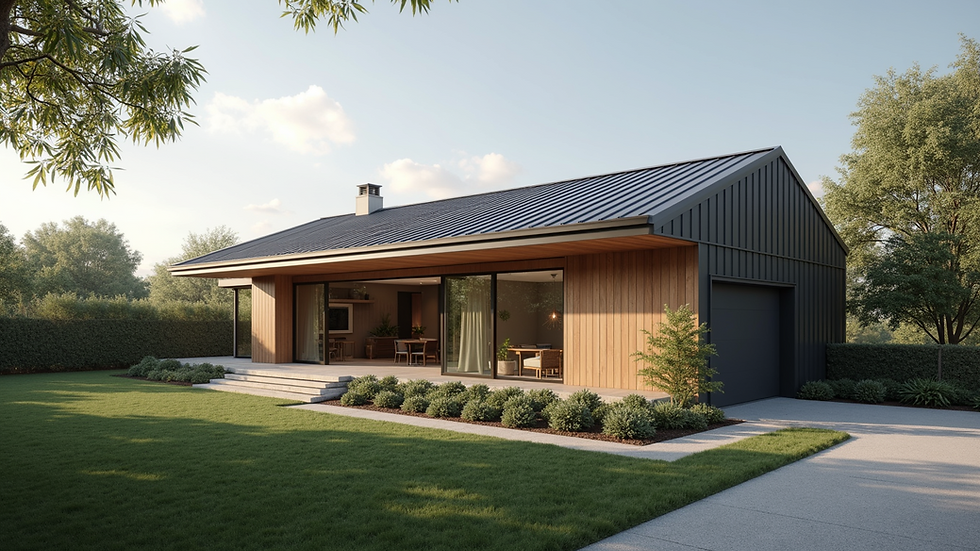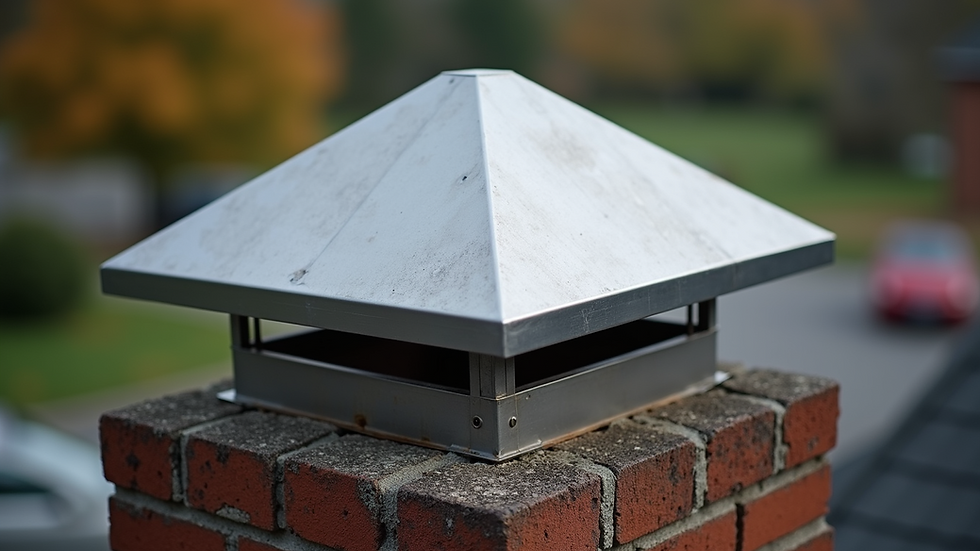Upgrade Your Home with Custom Metal Roofs
- jgroofing023
- Jul 2
- 5 min read
When it comes to home improvement, the roof is often overlooked. Many homeowners focus on interior design, landscaping, or energy-efficient windows. However, the roof is one of the most critical components of your home. It protects you from the elements and contributes to your home's overall aesthetic. If you are considering a roof upgrade, custom metal roofs might be the perfect solution.
Custom metal roofs offer a blend of durability, style, and energy efficiency. They can transform your home while providing long-lasting protection. In this blog post, we will explore the benefits of custom metal roofs, the different styles available, and how to choose the right one for your home.
Why Choose Custom Metal Roofs?
Custom metal roofs have gained popularity for several reasons. Here are some key benefits:
Durability: Metal roofs can last 40 to 70 years, depending on the material. They are resistant to extreme weather conditions, including heavy rain, snow, and high winds.
Energy Efficiency: Metal roofs reflect solar heat, which can help reduce cooling costs in the summer. This energy efficiency can lead to significant savings on your utility bills.
Low Maintenance: Unlike traditional roofing materials, metal roofs require minimal maintenance. They do not rot, crack, or warp, making them a smart choice for busy homeowners.
Aesthetic Appeal: Custom metal roofs come in various styles and colors. This versatility allows you to choose a design that complements your home’s architecture.
Eco-Friendly: Many metal roofs are made from recycled materials and are fully recyclable at the end of their life. This makes them a sustainable choice for environmentally conscious homeowners.
Types of Custom Metal Roofs
When considering a custom metal roof, you have several options. Here are some popular types:
Standing Seam Metal Roofs
Standing seam roofs feature vertical panels that interlock at the seams. This design creates a sleek, modern look. They are also highly durable and effective at shedding water and snow.
Metal Shingle Roofs
Metal shingles mimic the appearance of traditional roofing materials like wood or slate. They offer the same durability and energy efficiency as other metal roofs while providing a classic aesthetic.
Corrugated Metal Roofs
Corrugated metal roofs are characterized by their wavy pattern. They are often used in agricultural buildings but can also add a rustic charm to residential homes. They are lightweight and easy to install.
Metal Tile Roofs
Metal tile roofs combine the look of traditional tiles with the benefits of metal. They are available in various colors and styles, making them a versatile option for homeowners.
Choosing the Right Custom Metal Roof
Selecting the right custom metal roof for your home involves several considerations. Here are some tips to help you make the best choice:
Consider Your Home’s Architecture
The style of your home plays a significant role in determining the best roof type. For example, a modern home may look great with a standing seam roof, while a traditional home might benefit from metal shingles or tiles.
Evaluate Your Climate
Your local climate can influence your choice of roofing material. If you live in an area with heavy snowfall, a standing seam roof may be ideal due to its ability to shed snow effectively.
Think About Color
Metal roofs come in a wide range of colors. Choose a color that complements your home’s exterior. Lighter colors can help reflect heat, while darker colors can absorb heat, which may be beneficial in colder climates.
Budget Considerations
Custom metal roofs can be more expensive than traditional roofing materials. However, their longevity and energy efficiency can offset the initial investment. Determine your budget and explore financing options if needed.
Installation Process
Installing a custom metal roof is a significant project that requires professional expertise. Here’s a brief overview of the installation process:
Preparation: The existing roof may need to be removed, or the new metal roof can be installed over the old one, depending on local building codes.
Framing: A solid framework is essential for supporting the metal panels. This may involve adding battens or purlins.
Panel Installation: The metal panels are cut to size and installed according to the manufacturer’s specifications. Proper sealing is crucial to prevent leaks.
Finishing Touches: Flashing, trim, and other finishing elements are added to ensure a polished look and complete protection.
Maintenance Tips for Metal Roofs
While metal roofs require less maintenance than traditional roofs, some care is still necessary. Here are some tips to keep your roof in top condition:
Regular Inspections: Check your roof at least twice a year for any signs of damage or wear. Look for loose panels, rust, or debris buildup.
Clean Gutters: Ensure your gutters are clear of leaves and debris. Clogged gutters can lead to water pooling and potential damage.
Remove Snow and Ice: In winter, remove heavy snow and ice buildup to prevent damage. Use a roof rake or hire a professional if necessary.
Address Rust Promptly: If you notice any rust spots, treat them immediately to prevent further damage. Use a wire brush to remove rust and apply a rust-inhibiting primer.
The Cost of Custom Metal Roofs
The cost of a custom metal roof can vary widely based on several factors, including:
Material Type: Different metals, such as steel, aluminum, or copper, have varying costs. Copper is typically the most expensive, while steel is more budget-friendly.
Roof Size: The larger your roof, the more materials and labor will be required, increasing the overall cost.
Complexity of Installation: Roofs with multiple angles, valleys, or unique features may require more labor and time, affecting the price.
Location: Labor costs can vary by region. Urban areas may have higher installation costs compared to rural locations.
On average, homeowners can expect to pay between $5 to $12 per square foot for a custom metal roof. While this may seem high, remember that the longevity and energy savings can make it a worthwhile investment.
Real-Life Examples of Custom Metal Roofs
To illustrate the benefits of custom metal roofs, let’s look at a few real-life examples:
Example 1: The Modern Farmhouse
A couple in a rural area decided to upgrade their traditional shingle roof to a standing seam metal roof. They chose a light gray color to reflect heat and complement their modern farmhouse aesthetic. The new roof not only enhanced the home’s curb appeal but also reduced their energy bills significantly.
Example 2: The Coastal Retreat
A beach house owner opted for metal shingles in a vibrant blue color. This choice not only matched the coastal vibe but also provided excellent protection against saltwater corrosion. The homeowner reported that the roof has held up beautifully against harsh weather conditions.
Example 3: The Historic Home
A historic home was in need of a roof replacement. The owners chose metal tiles that mimicked the original clay tiles. This decision preserved the home’s historical charm while providing modern durability and energy efficiency.
Final Thoughts on Custom Metal Roofs
Upgrading your home with a custom metal roof is a smart investment. With their durability, energy efficiency, and aesthetic appeal, metal roofs can enhance your home’s value and comfort.
When considering a roof upgrade, take the time to explore your options. Evaluate your home’s architecture, climate, and budget. Consult with professionals to ensure you make the best choice for your needs.
In the end, a custom metal roof can provide peace of mind, knowing that your home is protected for years to come. So why wait? Start your journey toward a beautiful, durable roof today.



Comments